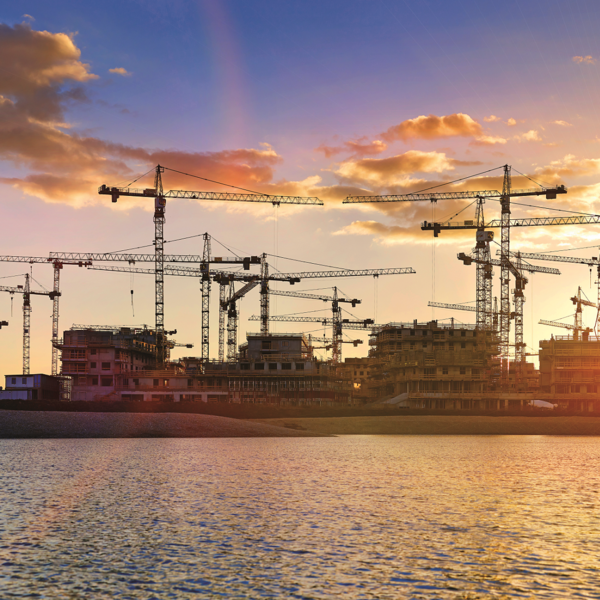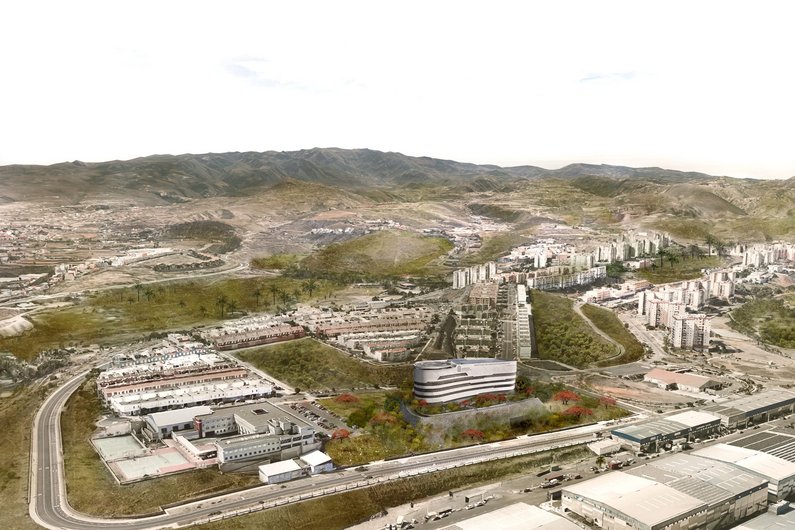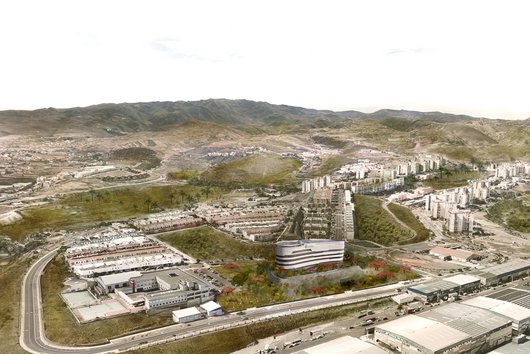

Sustainable buildings for critical infrastructure
Nuclear power plants and correctional facilities are two examples of buildings that must meet the most extreme version of the highest safety standards – and yet the demand for them is strictly limited. According to nucleopedia, 61 nuclear power plants are currently under construction in eight countries worldwide, although it is questionable whether they will all be completed. No information as precise as this can be found on the current state of construction of correctional facilities. However, a google search shows that for more than 20 years there has been a working group at the Supreme Building Authority in Bavaria that deals with the construction of correctional facilities. One more realistic area – in light of the fact that they are needed more often and demand is rising because of the potential increased probability of natural disasters – is buildings for services related to security, crisis preparedness and emergencies. Since 2008 the EU has been running a programme for critical infrastructure protection, EPCIP, which covers the energy, telecommunications, industry and transport sectors. The operation is essential for the functioning of Europe and for the uninterrupted provision of services to citizens.
There is a lot to consider when it comes to buildings of this kind. An overall concept includes not only the construction and type of building method itself, but also the security concepts that regulate access and use – such as alarm systems, a free-field security system, video surveillance and access control through locking systems. These relate to the areas of both digitalisation and mechatronics. The security concepts serve to ensure an appropriate level of protection not only for the buildings, but also for the people working in them. They must cover a wide variety of threat scenarios and hazardous situations. Depending on the building, suitable concepts for specific protected areas or individual security solutions covering the entire grounds are necessary.
The security concepts serve to ensure an appropriate level of protection not only for the buildings, but also for the people working in them.
Multiple risks
After an appropriate basic assessment to identify the necessary modules and components of the security concept, the next step is to take stock of the existing situation and to determine the interests worthy of protection, known as protection goals. The threat analysis includes the evaluation of risks such as burglary, theft, terror and vandalism, technical risks, cyber risks, natural risks such as earthquakes or floods, organisational risks, the consideration of sensitive areas such as data centres, archives, etc., and finally also the examination of insurance requirements. Once the property has been divided into different security zones based on the onion-skin principle, the next step is to describe the uses and traffic routes. In addition to the structural considerations, the range of measures also includes the technical installations as well as organisational and personnel measures.


Prime example on the Canary Islands
A prime example of how to design and build two such structures – known as Edificios de Servicios Esenciales, or ESE, which literally means buildings for essential services – is found on the Canary Islands. The 24-hour services that deal with regional security and emergency services were previously housed in scattered facilities. The plans to consolidate them were used as an opportunity to simultaneously increase the resilience of the buildings against natural disasters, the effects of climate change or pandemics, cyber-attacks and terrorism. So, in 2021, a public tender for two such buildings with a total investment of almost EUR 80 million was held. The Canary Islands are an island area, which means that the islands are more vulnerable to adverse climatic events and require more permanent infrastructure than on the mainland. The Canary archipelago is also constantly exposed to the risk of volcanic eruptions, Saharan dust, and hurricanes. At the same time, as part of Spain, it is one of the most advanced island territories in the world in terms of the provision of services and the general organisation of services for its citizens. The local government entrusted the architectural firm Fernando Menis with the implementation on Tenerife and Gran Canaria. Their design won out with two identical but autonomous buildings, each of which will house more than 500 public servants and deploy state-of-the-art technology. They will each have a built-up area of over 20,000m2.


Economic sustainability
The fact that two buildings that are located in different places have the same design and the same construction makes them more economically sustainable in the long run because they are easier to operate and maintain. The ESEs are energy efficient, highly resilient and designed to withstand any type of exceptional situation. Each ESE has an outer ring that acts as a buttress to withstand, minimise or redirect the impact of tsunamis, tidal waves and even lava flows. In the case of lava flows or tsunamis, the organic geometry will divert the disturbance factor towards the sides, reducing the impact on the building. This is possible thanks to the very ductile concrete structures, whereby ductile means they can be easily deformed. The perimeter walls, inspired by breakwaters, feature vegetation typical of the area. The large sidewalks in the access areas and the trees both inside and at the edges of the plots create spaces of transition from the public space to the inner core of the buildings. In this way, they are integrated into their respective urban contexts. At the same time, the massive structures stand as architectural landmarks. The layout is intuitive: There is a main core in the entrance area and two secondary cores on the sides. This creates a kind of interior street, largely freeing up the front of the building. The work zones can be modular and flexibly adapted based on user needs. The functional spaces include the offices, a crisis room, citizen service rooms, technology infrastructure – including the security control room – as well as cafeteria areas, an assembly hall, press room, car park and high security areas.
Expansive recreational areas and green zones
The interior garden, with its great biodiversity, and the rest areas scattered throughout the building will help employees relieve the extreme stress that their work often entails. The idea is to plant the areas with bromeliads, rosemary, jasmine, low-rise conifers, orange trees, maidenhair and ferns. These will stand alongside vibrant zones of multi-coloured flowers, a zone of low shrubs and a vertical garden area. The courtyard will also provide ample space for meeting, recreation, leisure and sport. In addition, the building has a recess that is 2.80m wide and 300m long, providing light and natural ventilation to the three upper floors. Since it is connected to the main outdoor courtyard, this ramp can be used for exercise such as walking or running as well as safety drills. The glazed facade is made with low-emissive double glass and has a solar control system that reduces solar incidence by more than 80%. It is also resistant against winds of more than 280 km/h and is able to receive impacts from solid elements. The facade’s horizontal slat system is arranged in such a way that it allows views of the exterior both when in a sitting position at a desk and while standing. A control system for natural lighting and interior thermal conditions will continuously monitor the building and modify each element to guarantee comfort.
The energy recovery system will be used to heat water so that the heat generated by the servers is not discharged into the environment.
Sustainable data centre
Both buildings will have a Data Processing Center, each spanning 350m2. They are designed with sustainability in mind: The energy recovery system will be used to heat water so that the heat generated by the servers is not discharged into the environment. The ventilation and air conditioning of the ESEs will also be sustainable: While natural and optimal air quality is a priority, the air conditioning system will provide energy savings as well. The 8cm-thick thermal insulation of the building envelope also helps to achieve this goal. In addition, the ESEs will have a photovoltaic system on the roof with a capacity of 90 kW to support the operation of the air conditioning system. Furthermore, the fact that the roof is finished with picón, a local volcanic stone, improves the energy efficiency of the building by increasing its thermal inertia. In addition, the porosity acts as a natural sound barrier, allowing helicopters to land on the building almost inaudibly. With these projects, Fernando Menis, who is famous for designing concert halls and auditoriums, gives a masterclass in how to combine safety and sustainability.














![[Translate to Englisch:] (c) Michael Nowy [Translate to Englisch:] (c) Michael Nowy](/fileadmin/_processed_/3/0/csm_20210426_Wien_Museum__1dfac84bf4.jpg)